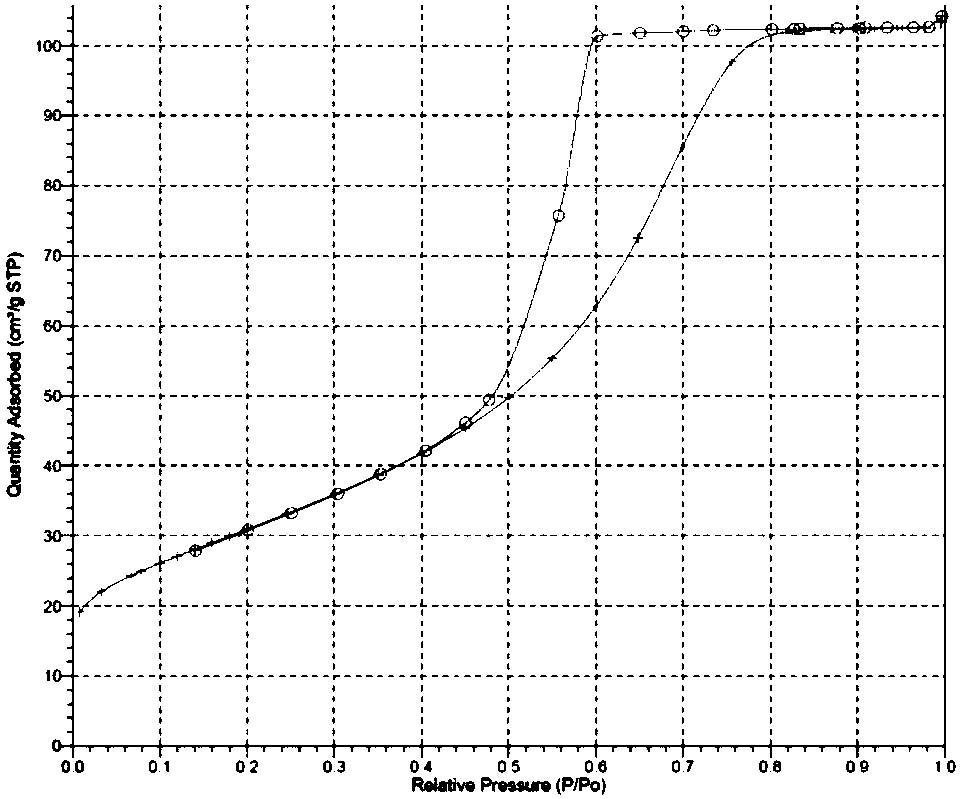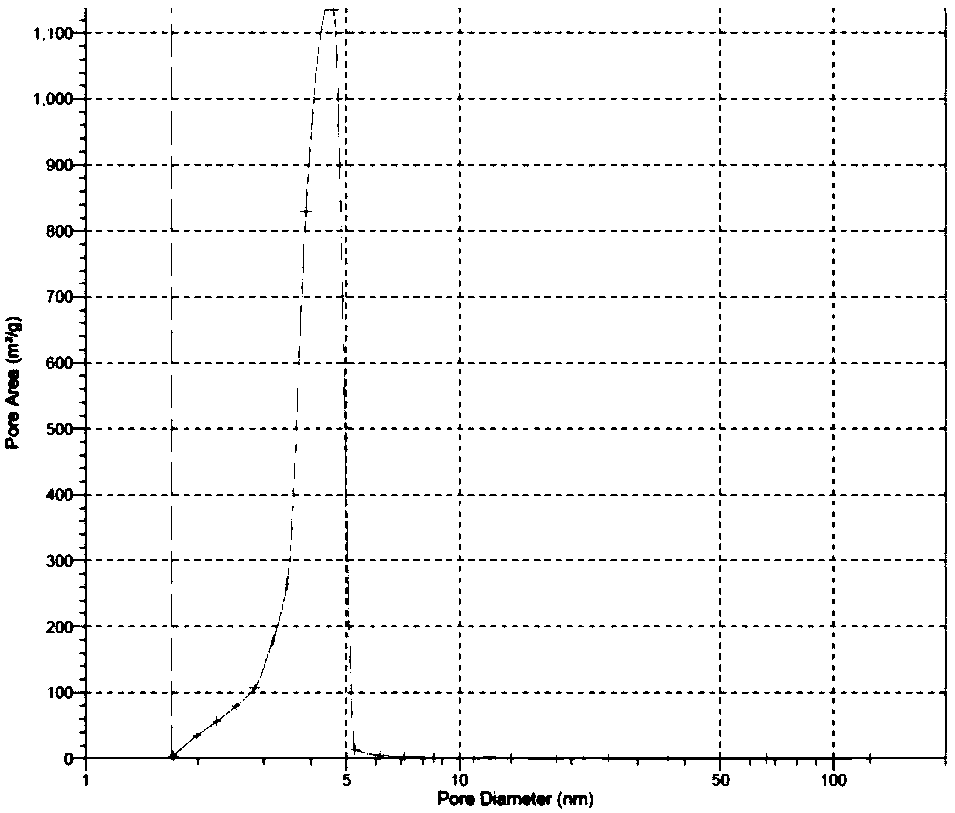Method for preparing a mesoporous Ag2O/TiO2 composite material
A composite material and mesoporous technology, applied in chemical instruments and methods, catalyst activation/preparation, chemical/physical processes, etc., can solve problems such as photocatalysis or low energy conversion efficiency, and achieve good photocatalytic performance
- Summary
- Abstract
- Description
- Claims
- Application Information
AI Technical Summary
Problems solved by technology
Method used
Image
Examples
Embodiment 1
[0029] Add CTAB and P123 to water at a molar ratio of 1:1, add it to the mixture of ethanol and hydrochloric acid, and stir in a water bath at 40°C to dissolve it. After 1 hour, a good amount of TBOT (variable 1) was added, and after 1 hour, a prefabricated silver nitrate aqueous solution (variable 2) was added dropwise. After 1 hour of heat preservation in a water bath, the stirring was stopped, and the mixture was transferred into a reaction kettle, and subjected to hydrothermal reaction in an oven at 100°C. After 24 hours, it was suction filtered and dried in an oven. The samples were heated from room temperature to 400°C at 1.5°C / min and kept at 400°C for 5 hours to obtain TAg series samples.
[0030] Calcination process: in air atmosphere, after raising to 100°C at a speed of 1.5-2°C / min, continue to raise to 450°C at a speed of 1.5-2°C / min and keep for 5 hours. Finally, after cooling down to 50°C at a rate of 2-3°C / min, the calcined sample was taken out.
Embodiment 2
[0032] Add CTAB and P123 to water at a molar ratio of 5:1, add to the mixture of ethanol and hydrochloric acid, and stir in a water bath at 40°C to dissolve. After 1 hour, a good amount of TBOT (variable 1) was added, and after 1 hour, a prefabricated silver nitrate aqueous solution (variable 2) was added dropwise. After 1 hour of heat preservation in a water bath, the stirring was stopped, and the mixture was transferred into a reaction kettle, and subjected to hydrothermal reaction in an oven at 100°C. After 24 hours, it was suction filtered and dried in an oven. The samples were heated from room temperature to 400°C at 1.5°C / min and kept at 400°C for 5 hours to obtain TAg series samples.
[0033] Calcination process: in air atmosphere, after raising to 100°C at a speed of 1.5-2°C / min, continue to raise to 450°C at a speed of 1.5-2°C / min and keep for 5 hours. Finally, after cooling down to 50°C at a rate of 2-3°C / min, the calcined sample was taken out.
Embodiment 3
[0035] Add CTAB and P123 to water at a molar ratio of 10:1, add it to the mixture of ethanol and hydrochloric acid, and stir in a water bath at 40°C to dissolve it. After 1 hour, a good amount of TBOT (variable 1) was added, and after 1 hour, a prefabricated silver nitrate aqueous solution (variable 2) was added dropwise. After 1 hour of heat preservation in a water bath, the stirring was stopped, and the mixture was transferred into a reaction kettle, and subjected to hydrothermal reaction in an oven at 100°C. After 24 hours, it was suction filtered and dried in an oven. The samples were heated from room temperature to 400°C at 1.5°C / min and kept at 400°C for 5 hours to obtain TAg series samples.
[0036] Calcination process: in air atmosphere, after raising to 100°C at a speed of 1.5-2°C / min, continue to raise to 450°C at a speed of 1.5-2°C / min and keep for 5 hours. Finally, after cooling down to 50°C at a rate of 2-3°C / min, the calcined sample was taken out. Example 4
PUM
| Property | Measurement | Unit |
|---|---|---|
| pore size | aaaaa | aaaaa |
| pore size | aaaaa | aaaaa |
Abstract
Description
Claims
Application Information
 Login to View More
Login to View More - R&D
- Intellectual Property
- Life Sciences
- Materials
- Tech Scout
- Unparalleled Data Quality
- Higher Quality Content
- 60% Fewer Hallucinations
Browse by: Latest US Patents, China's latest patents, Technical Efficacy Thesaurus, Application Domain, Technology Topic, Popular Technical Reports.
© 2025 PatSnap. All rights reserved.Legal|Privacy policy|Modern Slavery Act Transparency Statement|Sitemap|About US| Contact US: help@patsnap.com



